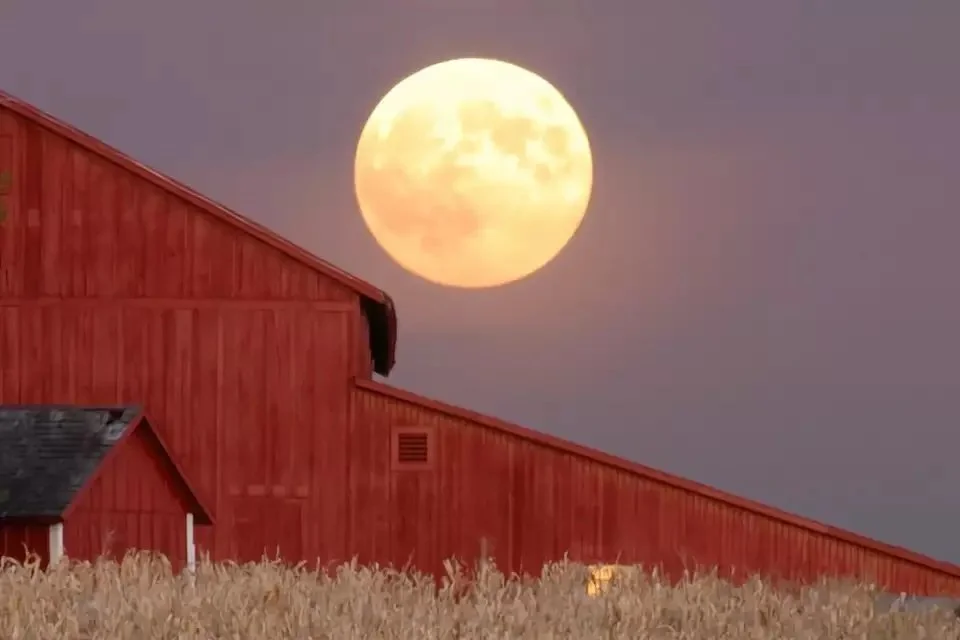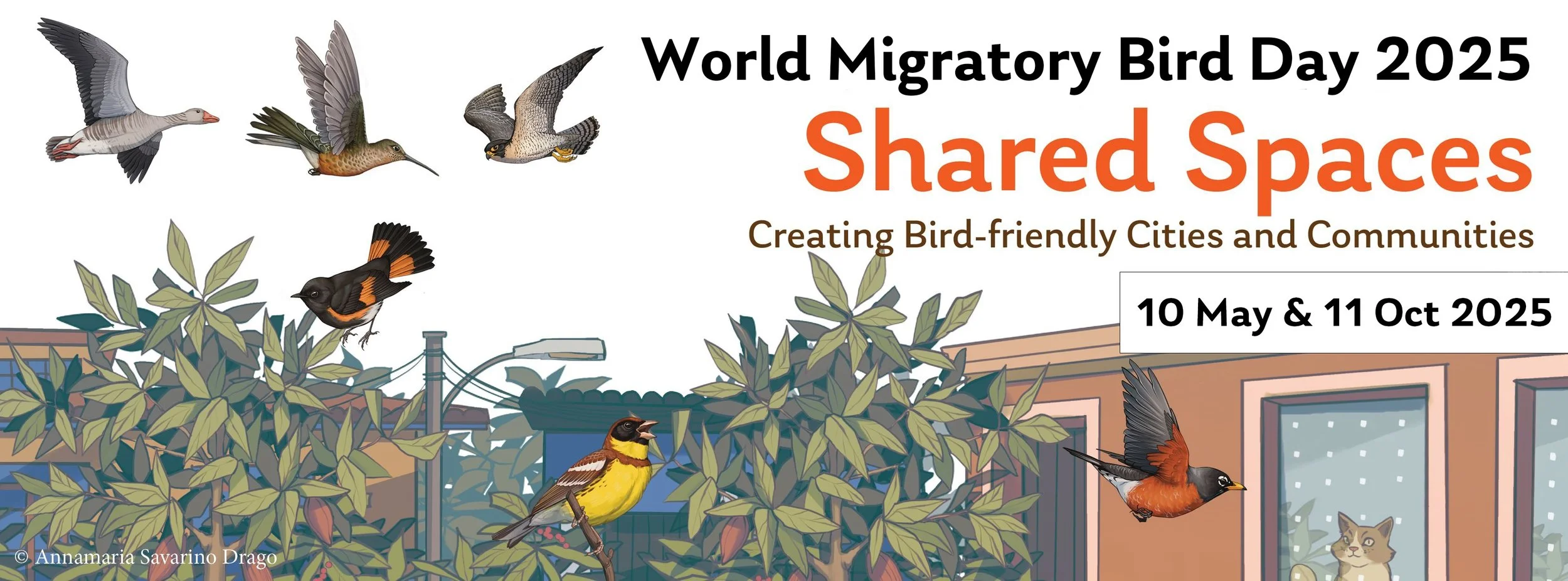October Days and Mysteries
To the Ojibwe people, October is the month of the Falling Leaves Moon; for the Catawba of South Carolina, it’s the time of the Harvest Moon (more on that below); to several Native nations it’s the Hunting Moon.
The names we use for these last months of the year are simply Latin ordinals, chosen when the first month of the year was March and not changed after Julius Caesar moved it to January. Hence, October means eighth month, November ninth, and December tenth.
To the Anglo-Saxons, Haligmonath, or Holy Month, began with the last new moon, reckoned as Sep. 23 because the “new” moon for the sake of a lunar calendar is when the new crescent is first visible, which is generally a couple of days after the dark moon that modern astronomers call the new moon.
I mentioned last month that I would try to find out why that month is called holy and found a brief entry on Wikipedia citing an Anglo-Saxon poem about the months called the Menologium, which, it says, states that Christianity was first preached to them in the ninth month, but the source cited makes no such claim. The poem was written in the 10th century and in a translation by the Old English Poetry Project of Rutgers University, about Holy Month it says “the best of women was conceived, the mother of the Lord.”
But the Anglo-Saxon calendar existed before Christianity spread through the British Isles, and the monk known as the Venerable Bede wrote all that we know about it in On the Reckoning of Time in the early 8th century. About Haligmonath, Bede wrote that it is a “month of sacred rites.” English author Carla Nayland concluded, after digging around in first century Roman writings about the Angles in Germany, that they were likely some sort of harvest celebrations, possible involving an earth goddess.
Moving along, the next new crescent moon appears on about Oct. 23, when Wintermonath begins; that is, the first month of winter.
The Harvest Moon rises this month—the full moon occurs Oct. 6. People throughout the Northern Hemisphere recognize the full moon nearest the autumnal equinox as the Harvest Moon because it illuminates the night just enough for farmers to continue harvesting crops long after sunset, in order to gather them in before the first hard frost. This year’s Harvest Moon will be extra big and bright, being the first of four months in a row of Supermoons, when the moon is near or at the closest point to earth in its eliptical orbit.
Wed., 1. Ukraine’s Defenders’ Day was enacted in 2014 to mark an uprising that led to the impeachment and removal of Pres. Victor Yanukovich for corruption, which was followed by Russia’s invasion of the Crimean Peninsula. It is now also a holiday to honor the men and women currently serving in Ukraine’s military against the Russian invasion. The date, which used to be Oct. 14, was chosen to correspond to an Orthodox holiday honoring Mary, Mother of God (Theotokos) because she is the patron of the Ukrainian Cossacks. In 2023, the date was changed to Oct. 1 on the Gregorian calendar as part of Ukraine’s distancing from the Russian Orthodox Church.
Thu., 2. Yom Kippur, the Day of Atonement, is the culmination of the Jewish High Holidays, which began with Rosh Hashanah on Sept. 23. The observance begins at the prior sunset.
—The International Day of Non-Violence is observed on this day by the United nations in honor of Gandhi’s birthday.
Fri., 3. Day of German Unity commemorates the reunification of Germany in 1990.
Sat., 4. St. Francis of Assissi is a patron of animals. Some churches have a special service called a Blessing of the Animals, when people bring their pets to church to be blessed.
Sun., 5–Sat., 11. Banned Books Week is organized by the American Library Association and the Banned Books Week Coalition. This year’s theme is “Censorship is so 1984. Read for your Rights.”
Mon., 6. The Mid-Autumn Festival is celebrated in China and many other East Asian countries on the 15th day of the eighth lunar month, which is the full moon day in either September or October. Formerly called the Moon Festival, it honors the moon goddess, Chang’e.
Tue., 7–Mon., 13. Sukkot, aka Feast of Tabernacles, is a Jewish observance that is both a harvest festival and a commemoration of the 40-year period of wandering after the Israelites fled from slavery in Egypt. People construct small booths or huts covered in greenery, called sukkahs, that recall the shelters that the Jews lived in during that time. For the seven days of the festival, people eat meals in their sukkah. The holiday begins at sundown on Oct. 16; during the first two days, Jews are not to work, candles are lit in the evening, and festive meals preceded by a ceremonial blessing are shared.
Wed., 9. Hangeul Day marks the adoption of the Korean alphabet in 1446 CE. The holiday was started in the 1920s when Korea was under Japanese rule and Japan was attempting to suppress the Korean language.
Thu., 10. National Day in Taiwan (“Double Tenth”) marks the 1911 uprising in China that overthrew the last emperor, which led to the founding of the Republic of China (ROC), which annexed Taiwan after WWII. When the Communist Party took over China in 1949, the ROC fled to Taiwan with 2 million Chinese and set up a government there. They also brought Mandarin Chinese culture and language, favoring it over Taiwan’s long-established Hoklo, Hakka, and indigenous heritage.
—World Homeless Day was established in 2010 to bring attention to the needs of unhoused people everywhere.
—World Day Against the Death Penalty unites death penalty abolitionists to educate people about its pointlessness and cruelty, and work together to put an end to it. The campaign’s slogan this year and last is “The Death Penalty Protects No One.”
Sat., 11. World Migratory Bird Day is observed on the second Saturday in May and October.
Mon., 13. Columbus Day became a national holiday in 1934 after the Knights of Columbus, a Catholic fraternal organization, successfully lobbied Congress to establish it on Oct. 12 to commemorate the day in 1492 that the Italian navigator reached the Bahamas. It was in part a response to decades of discrimination and violence against Italian Americans, and inspired by the historically inaccurate depiction of Columbus that prevailed in American history books. Some people still see the day as an occasion to celebrate Italian heritage more than its namesake.
In 1971, the date was changed to the second Monday in October. In 1990, South Dakota declared the date to be Native Americans’ Day, and several states and cities followed suit in subsequent years. Minnesota officially changed the holiday to Indigenous Peoples’ Day in 2023.
Pres. Biden became the first president to proclaim Indigenous Peoples’ Day in 2021, but that doesn’t change the official name, which is still Columbus Day on the books. Members of Congress have introduced a bill a few times, most recently in 2023, to make the name change official.
—Today is Thanksgiving in Canada.
Tue., 14. Simchat Torah is the last of a series of Jewish holidays that began with Rosh Hashanah. It celebrates the Torah, and both concludes and begins again the annual cycle of reading it.
Thu., 16. Spirit Day supports LGBTQ+ youth, who are at high risk for bullying and suicide. People wear purple to show support and organizations hold events.
Mon., 20–Fri., 24. Diwali is a 5-day festival of lights celebrated by Hindus and others.
Fri., 24. The United Nations was founded 80 years ago today, on Oct. 24, 1945, in San Francisco. (Click on photo above for source link.)
Sat., 25. St. Crispin’s Day is best known from Shakespeare’s Henry V, where it was invoked by the king in a rousing speech on the eve of this day, to rally his troops as they were about to face a much larger French army in the battle of Agincourt. Henry told them that the English people would forever associate St. Crispin’s Day with their valor. Despite the overwhelming odds, the English prevailed. The saint’s actual existence is uncertain, though he was believed to be a shoemaker and so a patron of that profession, as well as of leatherworkers in general.
Wed., 29. Chung Yeung Festival is observed in several Asian countries and is an official holiday in Hong Kong and Macau. It marks an ancient legend and, in some countries, entails visits to cemeteries to honor ancestors. Chrysanthemums and kite-flying are emblematic of the day.
Thu., 31. Halloween, a contraction of “hallowed evening,” is the eve of All Saints Day (Nov. 1), which is a Christian adaptation of an old Celtic end-of-harvest festival called Samhain (pronounced sau-un), which translates as “summer’s end.” To pagans, this is a cross-quarter day, occurring at the midway point between the fall equinox and the winter solstice; they believe that the separation between the physical and spiritual realms grows weaker as the nights get longer. To counter this, the Church proclaimed that the saints would protect Christians from the forces of darkness.
—Reformation Day, a German holiday, marks the day in 1517 when Martin Luther nailed a document known as The 95 Theses to the door of the Castle Church in Wittenberg; it was the seminal event of the Protestant Reformation.




